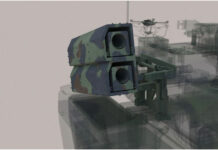Apart from their additional weight vests block natural ventilation, preventing sweat heat dissipation. Physiological tests have demonstrated that body and surface temperature of soldiers wearing bulletproof vests can rise by up to 2C degrees (4F) after one hour continuous physical workout, compared to those not wearing vests. Since sweat is gathered between the shirt and vest, air becomes saturated with humidity and the body’s natural cooling process renders ineffective. As result, heartbeat and body temperature rise, to extreme levels effecting physical and mental capabilities. The introduction of “breathing” athletic garments,active air circulation or micro-cooling, as well as redesigned protective vests, introducing larger gaps between the uniform and shield could reduce such adverse effects improving the soldier’s sustained physical abilities.
Improving mobility of individual soldiers can be achieved by providing lighter, improved fitting and more comfortable equipment, and optimizing to physiological conditions under which they fight. Infantrymen usually go to war carrying loads of up to 50 kg, including personal and mission-specific equipment. Infantry combat suits are designed to reduce this load below 25kg. Further mobility improvements include providing pads to protect neck, knees, elbows and shoulders. Such pads offer mechanical or ballistic protection and assist the soldier in maintaining positions for extended durations. Another mobility improvement can be achieved by offloading some supplies to onto a small load carrier, be it an ATV or small and maneuverable robotic “mule” which can closely follows the troops.
Additional parts of this article:
- Infantry Combat Suits
- Infantry Combat Suits – Survivability & Protection
- Infantry Combat Suits – Mobility & Ergonomics
- Infantry Combat Suits – Firepower
- Infantry Combat Suits – Computers & Communications



















